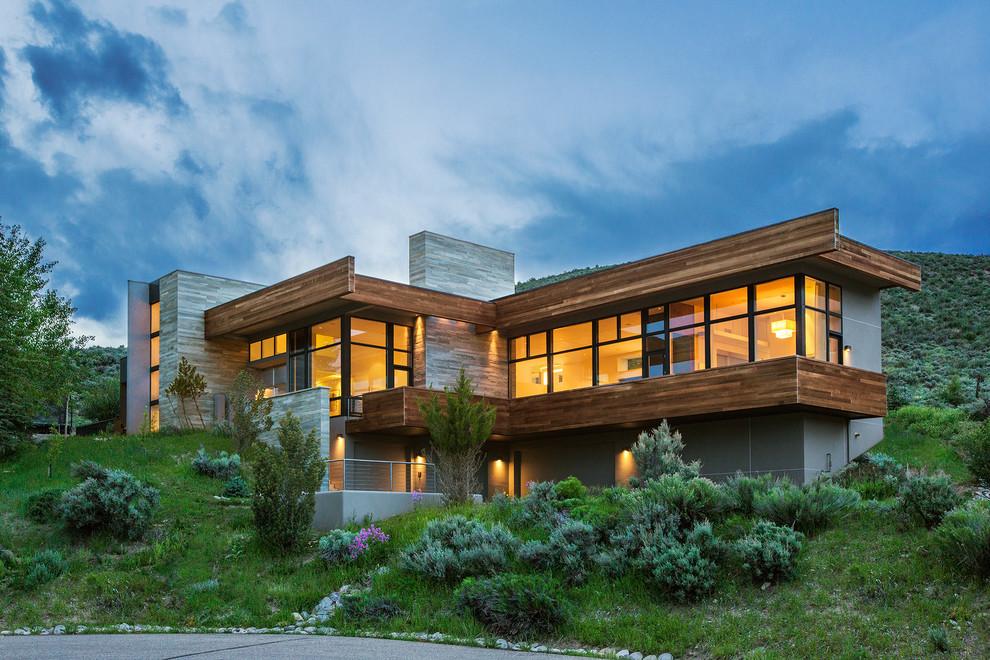#8557. Mountain residence with harmonious wood and stone facade
This contemporary mountain residence demonstrates a masterful combination of natural materials and minimalist architecture. The building's facade is divided into distinct geometric volumes, dominated by two primary materials: warm wood and cool stone. The horizontal wooden panels create a sense of warmth and organic quality, while the light stone elements add texture and visual weight to the structure.
Particularly expressive are the large panoramic windows that occupy a significant portion of the facade. These glass surfaces not only provide abundant natural light to the interior but also create a visual connection between the indoor space and the surrounding landscape. In the evening, as seen in the photograph, interior lighting penetrates through the glazing, creating a warm glow that contrasts with the twilight sky.
The building's architecture responds sensitively to the site's topography, with the house seemingly built into the hillside. Protruding cantilevers and terraces with wooden railings emphasize the horizontal lines of the structure and create transitional spaces between the house and nature. Notably, the facade design lacks decorative elements – expressiveness is achieved solely through the combination of materials, proportions, and the interplay of volumes.
To adapt similar techniques in your own design, consider contrasting material combinations (wood/stone/glass), using large windows for maximum interaction with the environment, and organically integrating the house into the landscape. It's also important to consider how the house will be perceived at different times of day – illuminated windows in the evening become an important element of the building's visual identity.
